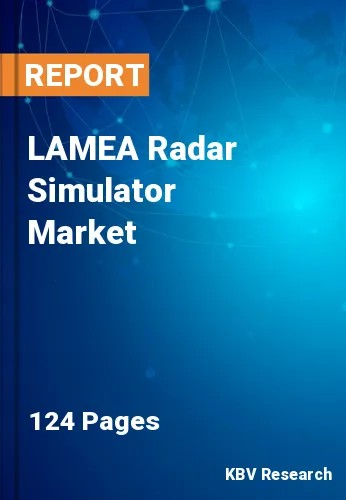The Latin America, Middle East and Africa Radar Simulator Market would witness market growth of 9.0% CAGR during the forecast period (2023-2030).
The utilization of cloud computing enables the dissemination of simulations for radio detection and ranging via digital platforms. By providing scalability, accessibility, and opportunities for collaborative training, cloud-based solutions enable users to access simulations from a variety of devices and locations. This phenomenon improves the adaptability and effectiveness of training programs for radio detection and ranging. Additionally, a significant number of partnerships and collaborations exist between the market's top participants. There are multiple factors contributing to this phenomenon. These include the imperative to acquire radio detection and ranging simulator technologies for personnel training, the necessity to optimize the performance of military personnel and operators in order to bolster safety, and the growing strategic significance attributed to radio detection and ranging simulators.
Moreover, the target market is substantially propelled by the demand for efficient and educated operators. The increasing complexity of these systems increases the significance of having skilled operators who can effectively utilize these technologies. Simulators provide a regulated setting in which operators can hone and perfect their abilities, thereby guaranteeing peak performance in practical situations. Due to gpolitical tensions and security concerns, there is an ongoing need for proficient radar operators. This generates a sustained demand for sophisticated training solutions, consequently expanding the target market.
Diverse security challenges, including geopolitical tensions, regional conflicts, and the threat of terrorism, characterize the LAMEA region. Training scenarios in radar simulators that replicate these challenges can be crucial for preparing defense forces for real-world situations. Some countries in the Middle East have experienced growth in defense budgets to address security concerns. As a result, these aspects will boost the market growth in the coming years.
The Brazil market dominated the LAMEA Radar Simulator Market by Country in 2022, and would continue to be a dominant market till 2030; thereby, achieving a market value of $98.9 Million by 2030. The Argentina market is showcasing a CAGR of 9.6% during (2023 - 2030). Additionally, The UAE market would register a CAGR of 8.7% during (2023 - 2030).
Free Valuable Insights: The Worldwide Radar Simulator Market is Projected to reach USD 4.1 Billion by 2030, at a CAGR of 5.3%
Based on Application, the market is segmented into Commercial (Aviation, Automobiles and Others) and Military. Based on Type, the market is segmented into Airborne, Marine, and Ground. Based on Component, the market is segmented into Hardware and Software. Based on Product, the market is segmented into Operator Training and System Testing. The report also covers geographical segmentation of Radar Simulator market. Based on countries, the market is segmented into Brazil, Argentina, UAE, Saudi Arabia, South Africa, Nigeria, and Rest of LAMEA.
By Application
By Type
By Component
By Product
By Country
Our team of dedicated experts can provide you with attractive expansion opportunities for your business.

